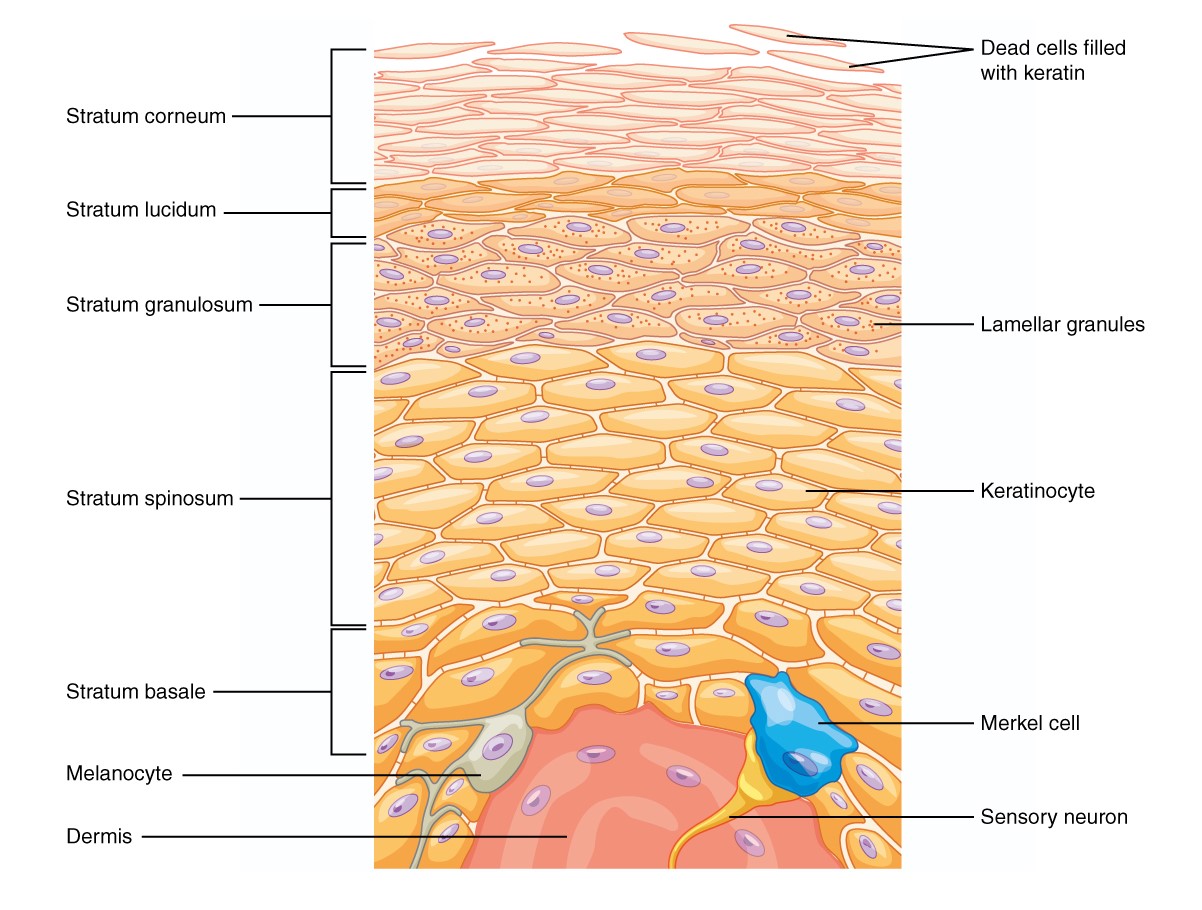Playlist
Show Playlist
Hide Playlist
Derivatives of the Skin: Hair
-
Slides Derivatives of the Skin Hair.pdf
-
Download Lecture Overview
00:01 Right. We spoke about the layers of the skin, the epidermis, the dermis. 00:05 Now we're moving on to talk about derivatives of the skin or what we call skin appendages. What are some of the skin appendages we've got? Firstly hair which is the hair follicle. 00:19 The sebaceous gland is the second skin appendage the sweat glands or eccrine glands. 00:25 That's the third appendage and the apocrine gland. 00:30 We also have the nails as part of the skin appendages. 00:34 All right. Now let's home in on the hair as one of the skin appendages. 00:41 The hair is divided into the root and the hair shaft. 00:46 And the hair shaft is the part that you see above the scalp. 00:50 We also have the sebaceous gland, which opens into the hair follicle. 00:56 And we have the erector muscle, which inserts just beneath the sebaceous gland. 01:02 Glent. This is the muscle that contracts and gives you goosebumps when you are feeling cold. Okay, now let's look at the layers of the hair. 01:15 We have the hair papilla which is right down in the base of the hair. 01:20 The internal root sheath. 01:22 External root sheath which is outside. 01:25 And of course the hair bulge, which is an active area where all the stem cells of the hair are located. 01:33 So what's the difference between vellus hair and terminal hair? It's all listed there. 01:37 But basically vellus hair is the fine hair that you find all over the body except on the palms and soles and lips and genitalia. 01:47 If one looks at terminal hair, it's the thick hair that one finds on the scalp, face, the armpits, and pubic area. 01:55 The texture of the villa tends to be fine, short and light colored, whereas terminal hair has got coarse, thicker, and darker in color. 02:05 The villa set tends to grow slowly and not typically long, as you know, your body has much shorter than your. 02:11 Your hair on your scalp and terminal hair grows faster and can grow longer. 02:18 So it's listed there what the functions of the villa say and the terminal hair are. 02:23 And we can always have a look at that. 02:27 So what happens when there's an abnormality of the villa's hair. 02:30 You get a condition called hypertrichosis lanuginosa. 02:35 And one finds villous or downy hair all over the face and body. 02:41 This actually in an adult could also be a manifestation of a type of cancer. 02:47 What happens when we have excessive terminal hair in females? We call this hirsutism, meaning that you've got a hair growth in a male pattern and the number of causes of that we won't go into that.
About the Lecture
The lecture Derivatives of the Skin: Hair by Ncoza Dlova is from the course Introduction to Dermatology.
Included Quiz Questions
Which of the following statements best describes vellus hair?
- Vellus hair is fine, short, and light-colored.
- Vellus hair is found in specific regions of the body.
- Vellus hair primarily serves to protect the skin from environmental factors.
- Vellus hair is involved in the development of secondary sexual characteristics.
- Vellus hair develops during puberty under the influence of androgens.
Customer reviews
5,0 of 5 stars
| 5 Stars |
|
5 |
| 4 Stars |
|
0 |
| 3 Stars |
|
0 |
| 2 Stars |
|
0 |
| 1 Star |
|
0 |




